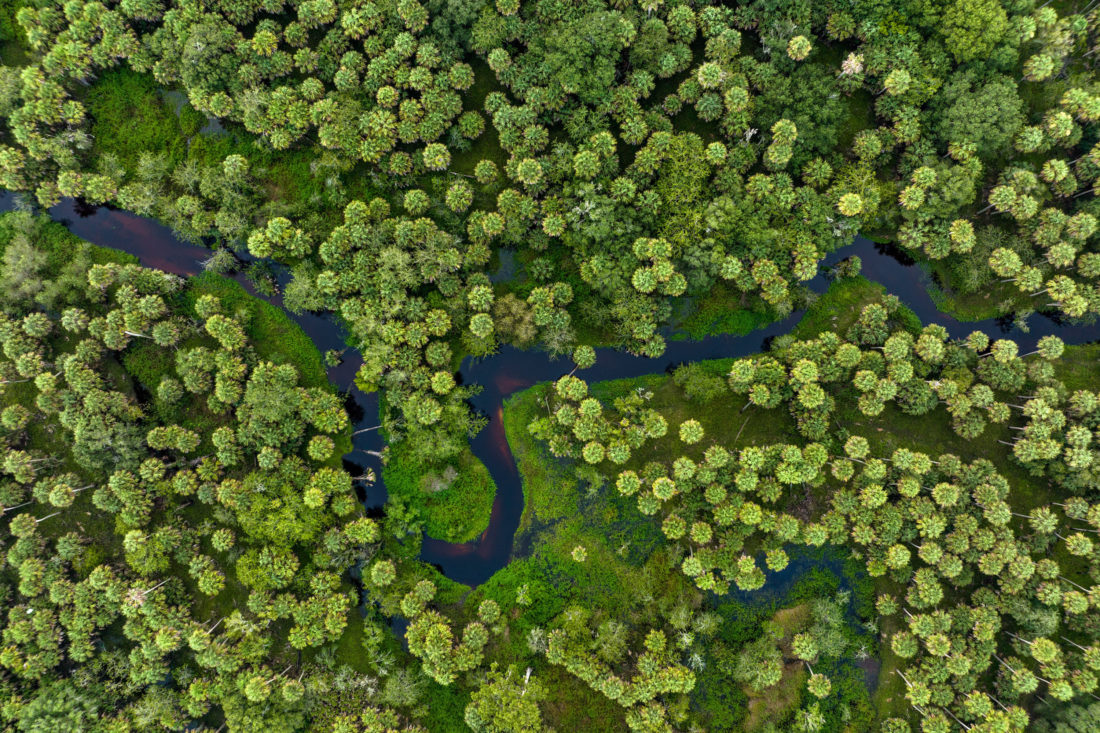“What if, instead of an afterthought, green space was our starting point during development?” muses Jason Lauritsen. As the chief conservation officer for the Florida Wildlife Corridor Foundation, Lauritsen spends a lot of time thinking about green space; he helps plan and facilitate the state’s ambitious goal of protecting eighteen million acres of land that will thread Florida’s varied landscapes together. This fall, the corridor, which the Florida legislature approved in July 2021, added seven more properties to its roster, acreage that is more important than ever for the state’s wildlife in the aftermath of hurricanes Ian and Nicole, and as a safeguard during future storms.
The plan, Lauritsen says, “touches every Floridian.” In addition to conserving nearly 700 of the state’s imperiled plant and animal species, protecting agricultural and ranching lands from development, and aiding with air and water quality, the corridor includes more than 5,000 miles of public hiking and walking trails, plus 1,500 miles of paddling trails. We caught up with Lauritsen to find out more about the corridor’s progress and some things you might have not realized about the undertaking.
The corridor isn’t a new idea.
State legislators passed the Florida Wildlife Corridor Act, which officially recognized the importance of protecting the eighteen million acres, just a year and a half ago. But the idea dates back four decades. In 1985, building on emerging principles of conservation, biologists Larry Harris and Reed Noss proposed a statewide ecological network that would maintain connectivity across the state’s ecosystems, protecting critical habitat for specialized species, like the Florida scrub jay, and giving space for roamers, including the Florida panther. Planning and acquisition started in earnest in the nineties; from 1990 through 2008, the state spent some $300 million a year to protect key lands.

In fact, it already exists.
The decades of work have already resulted in protections for ten million acres. Modeling from a statewide database called the Florida Ecological Greenways Network identified the remaining eight million “opportunity area” acres, which are not currently developed. That means the corridor is actually already in existence—it just lacks permanent protection for its entirety. “This is something I always let people know,” Lauritsen says. “We’re not proposing to go in and create something in an existing neighborhood or existing town. We’re looking to preserve the legacy that’s been left us from previous generations.”

The project includes preserving working agriculture and livestock lands.
This fall alone, the corridor gained some 20,000 acres across seven properties in the opportunity area. The majority of that acreage isn’t confined to parks or untouched land. It’s actually part of working ranches. Crippen Ranch is one—its 615 acres near the Kissimmee Prairie Preserve State Park provide important habitat for sandhill cranes. Horse Creek Cattle Ranch is another, with 12,000 acres spanning a variety of ecosystems, including bottomland forest, scrubby flatwoods, and blackwater streams. The land also includes 1,883 acres of Buck Island Ranch in Highlands County, part of a 10,500-acre working ranch owned and managed by Archbold Biological Station and home to 371 native plants and 171 documented bird species. These properties will continue as ranching lands, but their designation as part of the corridor means that the landscapes will remain undeveloped so that animals—like a passing Florida panther—can use them alongside humans.

The corridor is more important than ever as hurricanes worsen.
Big or small, each piece of land plays a role in the corridor, which can act as a buffer for wildlife during storms. Connected habitat means that Florida black bears and other large mammals can head inland and hunker down among dense vegetation. And for rare and specialized species, connected habitat is key to ensuring that a species can recolonize an area even if a local population is lost. As Lauritsen points out, even unremarkable-seeming species have important ecosystem roles to play.
During Hurricane Irma in 2017, for example, the storm stripped trees of their leaves in the bald cypress forests of Corkscrew Swamp Sanctuary in southwest Florida. That, in turn, deprived the cyprus looper, a small, nondescript moth, of its primary food source—the moths emerge en masse in late summer and feed on the leaves of cypress trees. Without the moths, the prothonotary warblers that start heading south in the fall did so without fattening up on that important food source. “How many did not have enough mass on their tiny warbler bodies to make it across the Gulf of Mexico to Central and South America?” Lauritsen wonders. “We don’t always think about or even know all of the effects a storm can have.”

It provides a blueprint for the future.
Lauritsen says the plan can guide the state as it continues to welcome more people, and set an example for other states to follow. By identifying key green spaces, it seeks to balance the needs of future development with those of wildlife, and it can provide benefits to the public and the economy. “We have not just the opportunity, but the obligation to be stewards of the land for future generations,” he says. “Eight generations from now, I hope they can look back and say that because of this, floodwaters during storms dissipate into natural storage areas and preserve the safety of nearby communities. Ranches continue to raise cattle and provide food for the state. And iconic species like panthers and black bears have remained in Florida.”









